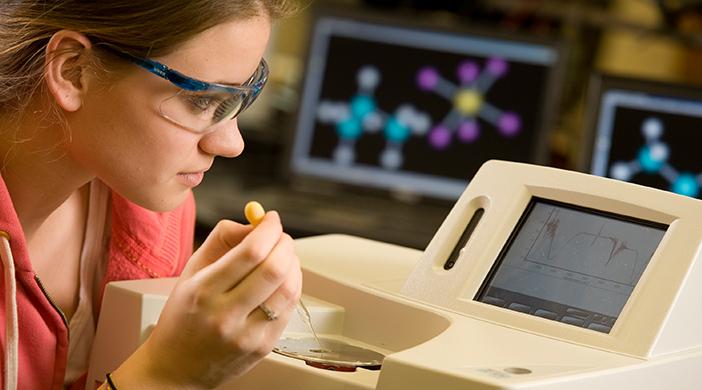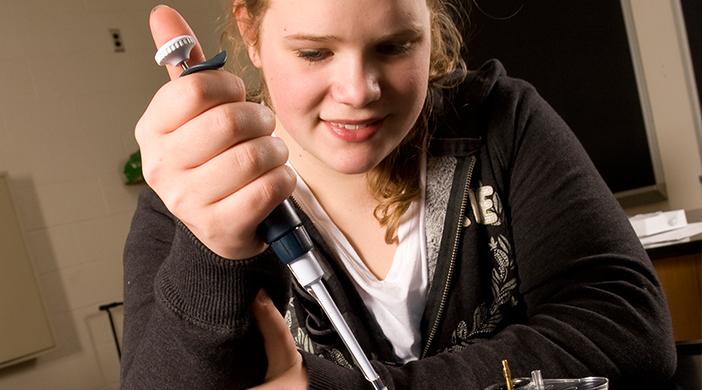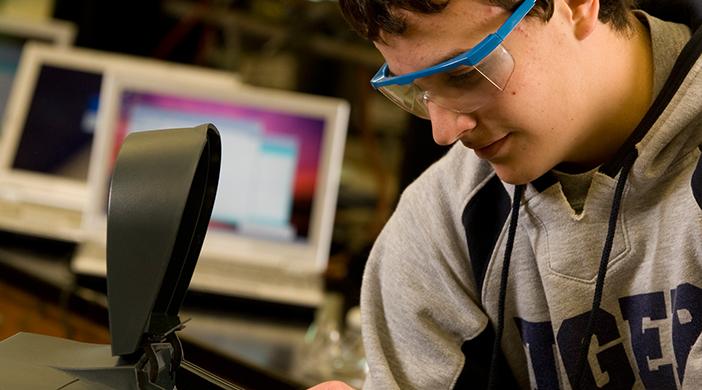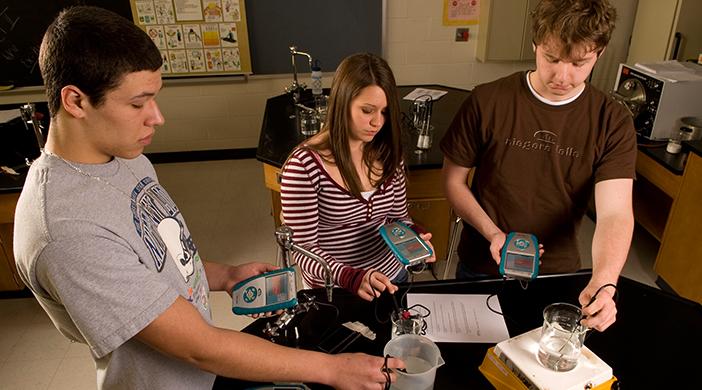Science in Motion Project
The Science in Motion project is designed to support state-of-the-art instruction for secondary science students in our area. How is this possible? The project purchases and then loans science data-collecting equipment, otherwise unavailable or financially out-of-reach, to area schools.
The loan process works on three levels.
- We can bring the equipment and a self-contained, fully-prepared lesson into the school district classroom and teach the lesson for the teacher who requests it.
- We will bring the equipment and team teach the lesson with the classroom teacher to help them become more comfortable with the instrumentation and its use with students.
- Or, if the teacher is comfortable with the use of the equipment, we will deliver it to the school as requested and return to pick it up when the teacher has finished using it and move it on to another location.
No matter which loan process you choose, the ultimate outcome is an enhanced science curricula as students get hands-on experience using state-of-the-art equipment.
To request equipment and labs, fill out the form at the bottom of this page.
The Science in Motion Project seeks to support the improvement of secondary science education by:
- Providing access to adequate instructional resources.
- Providing access to effective professional development opportunities for science teachers.
- Providing support for the development of good secondary science curricula.
Teacher support
This program will offer the type of professional development activity most needed by teachers of science. That is professional development in a particular subject area that is ongoing and allows one to work with other teachers from the same subject area within the sciences. Both summer and academic year professional development sessions will be offered specific to the stated needs of the teachers of our region.
Here's what some teachers had to say about their experience with Science in Motion:
- "Science in Motion has materials that allowed me to offer learning experiences for my students that I couldn't afford any other way."
- "Science in Motion enables our students to stretch their minds and demonstrate a greater understanding of science."
- "The students love the labs. SIM activities increase their enjoyment and their learning."
- "One of my personal goals is to allow students to have experiences that they wouldn't have otherwise and may never again. Science in Motion allows me to give kids those experiences."
- "The time frame in which you can get things is pretty reasonable. Any time I want anything, it's usually available or on its way to me from another school."
- "It's really exciting to me when (my students) go to college and they come back and say 'We did this in my college class and I already knew how to do it.' These are some skills that they can take with them and I wouldn't be able to do this on my own."
PennWest Clarion Support and funding
The Science in Motion Project is operated through the Science Education program under the supervision of Dr. Karen Spuck. The Department of Biology and Geosciences and the Department of Chemistry, Mathematics and Physics are involved and lending support to the project. Spuck also is the mobile educator for the project and serves full-time to work with area schools and teachers to assist them in all ways possible.
Funding for the Science in Motion at PennWest Clarion project is provided on a year-to-year basis by the Pennsylvania General Assembly through the Pennsylvania Department of Education. Nine such projects are funded each year across the Commonwealth, PennWest Clarion is the sole PASSHE institution involved at this time. We are supported by: PennWest Clarion and Science in Motion conducted by Juniata College in central Pennsylvania.
For more information contact Karen Spuck at 814 393 2408
Available resources
You may use any lab activity with any of the equipment we have. The focus of the Science in Motion Project at PennWest Clarion at this time is on secondary biology and chemistry, as well as, some physics. A great deal of the equipment/instrumentation used in teaching and student research is common across these areas so we chose to focus on them. The list of available equipment and materials, and the corresponding available classroom lessons, is growing on a daily basis. Many of the lessons we are making available focus on the use of laptop computer based probe systems as used in many research laboratories.
Available equipment
Available Labs (*NGSS Aligned)
Science In Motion
Equipment & Labs Lists
Equipment For All Disciplines
Lab Activities:
You may use any lab activity with any of the equipment we have.
We have copies of the PASCO teacher manual available for you to check out if you wish to do so.
Biology Labs and Activities:
To view a lab, click on the lab name.
Chemistry Labs
Physics Labs
| Motion and Forces: |
|
Waves: |
|
|
Light: |
Spectrometer |
|
Heat: |
|
|
Electricity: |
earth & Space/ Environmental
| Greenhouse Gases w/ Ecozone |
Request Form



